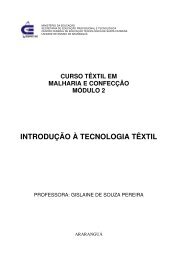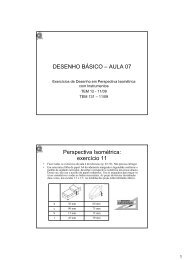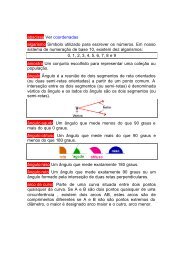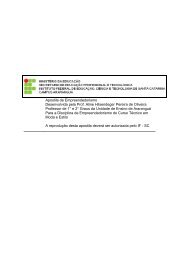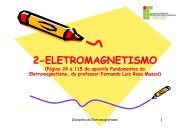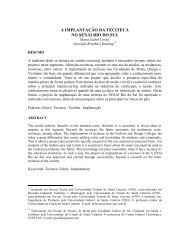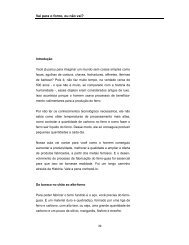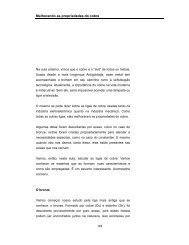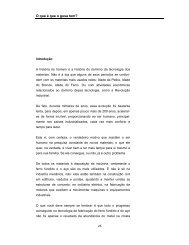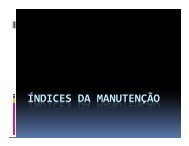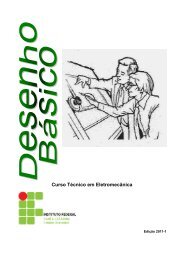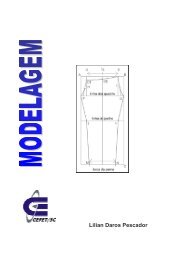livre - Wiki do IF-SC
livre - Wiki do IF-SC
livre - Wiki do IF-SC
You also want an ePaper? Increase the reach of your titles
YUMPU automatically turns print PDFs into web optimized ePapers that Google loves.
ABSTRACT<br />
IMMOBILIZATION OF LACCASE AND ITS USE IN PAPER MILL EFFLUENTS<br />
BIOTRANSFORMATION<br />
Paper mill effluents are formed by several toxic phenol compounds. Among such<br />
compounds, some of them of high molecular-mass (MM) are biotransformaded only by some<br />
organisms such as fungi from Basidiomycota type. Several studies prove that wood<br />
biodegradation by these fungi mainly depends on its capacity of producing extracellular<br />
ligninolytic enzymes such as laccase ones. Laccase enzymes catalyze oxidation of a variety of<br />
aromatic compounds, especially phenol ones. Several applications have been suggested for<br />
these enzymes, among them, its use in bioremediation of phenol compounds, thus, effluents<br />
which contain such compounds. Nevertheless, these applications and any other involving<br />
enzymes in its free form are not possible because of its peculiarities, as for example, they lose<br />
activity under denaturants means and conditions. Thus, to increase enzymes operational<br />
stability, they can be immobilized in solid supports which supply more resistance to activity<br />
loss. Considering this, the present essay, has as main aim to immobilize a laccase enzyme in<br />
chitosan spheres and evaluate its biotransformating potential of a paper mill effluent sample.<br />
Initially it was possible to observe that, in spite of the enzyme had acquired operational<br />
stability low values, it became more resistant to many conditions and denaturant means, such<br />
as: high pH and temperature, inhibitors and solvents presence. In a second stage, some<br />
biotransformations tests were performed with effluent samples and the immobilized enzyme.<br />
Biotransformation process was surveyed during different periods of time according to the<br />
following patterns: total phenols, low MM phenols, color and DQO. With basis in obtained<br />
results it was possible to notice that after 24 incubation hours of the immobilized enzyme and<br />
the effluent, 65% of MM phenols were removed and 60% of the color ones. Although<br />
statistically significant changes in DQO levels were not observed after enzymatic treatment, it<br />
was possible to conclude that the immobilized enzyme in quitosane spheres have a great<br />
biodegrading potential of phenol compounds which, at the same time, are the ones which stop<br />
chemical agents, responsible for such kind of effluent high toxicity.<br />
Keywords: Laccase, immobilization, paper mill effluents, phenol compounds, chitosan, paper<br />
and cellulose.<br />
VII



